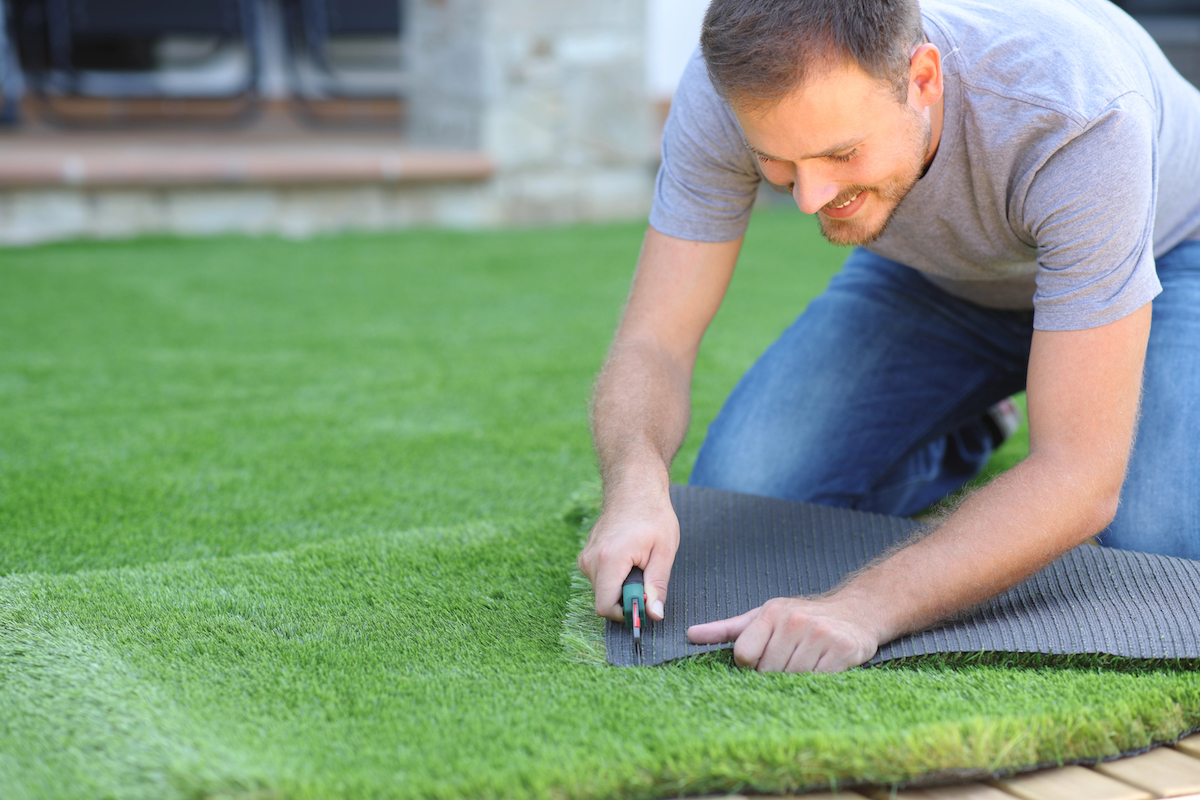Expert Arizona Turf Providers Offering a Realistic Lawn Alternative
Expert Arizona Turf Providers Offering a Realistic Lawn Alternative
Blog Article
See Why Homeowners Prefer Artificial Grass for Lasting Landscaping Practices
As homeowners significantly prioritize sustainability in landscape design, man-made turf has actually arised as a compelling option to traditional lawn. What continues to be to be checked out is the full extent of benefits that synthetic lawn can offer to house owners and the atmosphere alike.
Water Preservation Advantages
One of one of the most considerable benefits of synthetic grass is its role in water preservation. Standard turf yards need significant amounts of water to maintain their rich appearance, frequently leading to overuse of local water sources, particularly in dry areas. On the other hand, synthetic grass removes this need totally, as it does not call for irrigation. This not just saves water yet additionally minimizes the stress on municipal water supply, specifically during drought conditions.
Moreover, the setup of fabricated turf can contribute to an extra lasting landscape. Home owners can considerably lower their water bills, enabling for reallocation of resources to other environmental efforts or home uses. Furthermore, synthetic grass is made to hold up against various weather conditions without the need for supplemental watering, making it an excellent option for regions encountering water scarcity.
The environmental advantages expand past instant water financial savings. By decreasing water consumption, synthetic grass helps to alleviate the influences of climate change, preserving crucial ecosystems that are intimidated by extreme water extraction. As lasting landscape design practices acquire grip, synthetic grass emerges as a responsible choice for home owners seeking to develop environmentally friendly outside areas.
Lowered Upkeep Initiatives
Fabricated grass considerably decreases maintenance efforts contrasted to conventional grass lawns. With fabricated lawn, house owners can get rid of the lengthy tasks related to natural landscape design, such as mowing, fertilizing, and weeding. This not only conserves valuable time yet likewise lowers physical labor, making lawn treatment accessible for people of all ages.
Conventional grass need frequent cutting to maintain a visually pleasing height, whereas synthetic lawn continues to be consistently lavish without the requirement for reducing. Additionally, home owners no much longer need to apply pesticides or plant foods, which are usually called for to maintain natural lawn healthy.
Furthermore, synthetic lawn is long lasting and resilient, calling for very little upkeep past periodic brushing and rinsing to remove particles. This convenience of maintenance allows house owners to enjoy their exterior spaces without the continuous concern of maintenance, offering even more time for leisure and household activities. Eventually, the decreased maintenance efforts connected with artificial lawn make it an appealing option for those seeking a low-maintenance, visually appealing landscape.

Environmental Effect Reduction
There is an expanding recognition of the environmental benefits linked with fabricated grass, particularly in regards to water preservation and lowered chemical usage. Traditional grass require substantial quantities of water, specifically in drought-prone regions, leading to boosted pressure on regional water resources. On the other hand, fabricated turf eliminates the requirement for watering, considerably minimizing water usage and advertising sustainability.
In addition, standard lawn upkeep often involves the application of herbicides, pesticides, and plant foods, which can contribute to soil and water contamination. Fabricated grass reduces this ecological danger by calling for marginal maintenance and virtually removing the requirement for unsafe chemicals. This not just boosts soil health but likewise shields regional environments from hazardous runoff.
Furthermore, the production of natural grass lawns commonly involves making use of fossil fuels for mowing and landscaping devices, additional adding to greenhouse gas emissions. By selecting synthetic grass, home owners can substantially lower their carbon impact connected with lawn care activities.
Aesthetic Allure and Convenience
Along with its ecological advantages, synthetic grass uses considerable aesthetic allure and adaptability for landscaping. Home owners can attain a lush, eco-friendly look year-round, getting rid of the seasonal fluctuations commonly Related Site related to all-natural yard. This consistent visual not only improves the aesthetic allure of a residential property however additionally adds to a refined and properly maintained appearance.
In addition, synthetic grass is available in a selection of styles, colors, and that site textures, permitting customization to match private preferences and layout motifs - Phoenix turf companies. Whether used in household yards, business areas, or recreational areas, it can seamlessly incorporate into varied landscaping layouts, from contemporary minimalist to lush tropical settings
The flexibility of synthetic grass expands past plain look; it can be mounted in various locations, including rooftops, outdoor patios, and also indoor rooms, producing opportunities for special landscape design remedies. Furthermore, it appropriates for a series of activities, from youngsters's play areas to pet-friendly settings, giving capability without compromising style.
Ultimately, the visual allure and convenience of synthetic grass make it an appealing choice for homeowners seeking sustainable landscaping remedies that do not sacrifice charm for environmental responsibility.

Long-Term Cost Financial Savings
One of the most engaging advantages of artificial lawn is its capacity for long-lasting cost savings. Unlike all-natural lawn, which needs normal upkeep-- including mowing, watering, feeding, and parasite control-- synthetic grass significantly decreases these continuous expenses. Property owners can conserve a substantial amount on water bills, especially in regions where water shortage is a go pressing problem. The removal of lawn treatment solutions additionally adds to economic cost savings, as there is no need for specific devices or labor.
Furthermore, synthetic grass has a lifespan of 15 to 25 years, depending on its top quality and use. This longevity decreases substitute prices, making it a much more cost-effective selection over time. The preliminary investment in fabricated lawn can typically be recouped through the savings accrued over time.
While the upfront price might appear greater contrasted to turf installment, the advancing savings from minimized upkeep and water usage frequently exceed these first expenses. Inevitably, the adoption of artificial turf not just promotes a lasting landscaping solution but additionally offers homeowners a monetarily smart alternative that aligns with long-lasting budgeting goals.
Verdict
Synthetic grass arises as a compelling alternative for sustainable landscape design, supplying substantial benefits in water preservation, decreased maintenance efforts, and decreased ecological effect. Its visual charm and convenience boost the aesthetic landscape while lining up with modern-day sustainability goals. Furthermore, long-term expense savings contribute to its good looks for home owners. As areas progressively focus on eco friendly techniques, the adoption of synthetic lawn stands for a dynamic step toward attaining lasting and resilient landscapes.
In addition, synthetic grass is created to endure various weather conditions without the demand for additional watering, making it an excellent option for regions facing water shortage. (Arizona turf)

Artificial lawn emerges as an engaging choice for lasting landscape design, supplying significant advantages in water conservation, minimized upkeep efforts, and decreased ecological influence.
Report this page